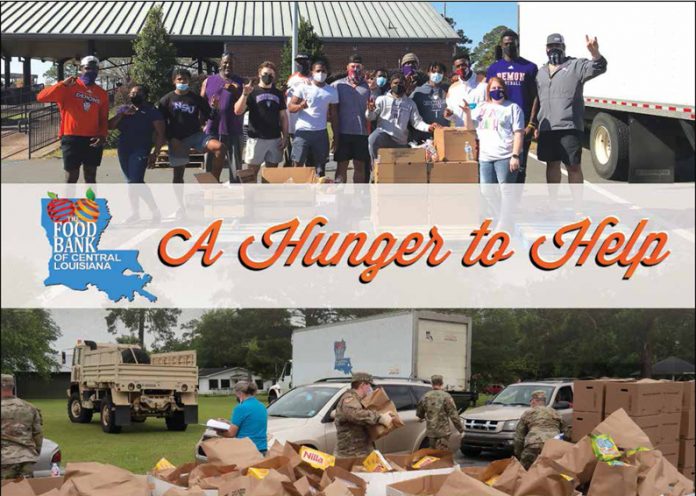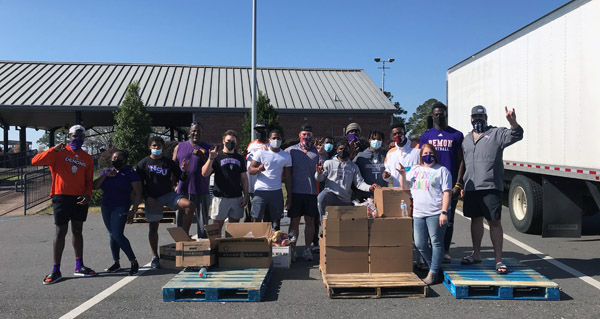What does “food insecurity” mean? We’ve all been hearing the term “food insecurity” on the news lately, and we’ve seen the pictures of long lines at food banks across the U.S. But what does it all really mean? What does it mean to be hungry in America, and what’s the situation here in Cenla?
The U.S. Department of Agriculture defines food insecurity as lacking “consistent, dependable access to enough food for active, healthy living.” Hunger touches every part of a person’s life, and its affects can last long-term–it can lead to health problems in adults and under-development in children.
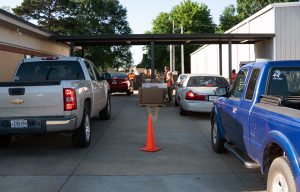
Since April, hunger has exploded all over the U.S. due to the economic fallout of the pandemic. In Central Louisiana, one in five of our neighbors is now living in food insecurity, including about a third of our children. That’s nearly 30,000 hungry kids in Cenla.
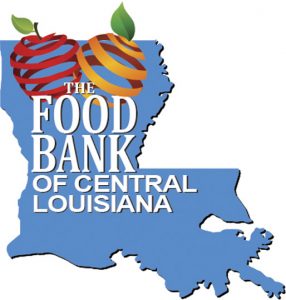
Needless to say, 2020 was a busy year at the Food Bank of Central Louisiana. COVID came on fast, so the food bank hoped to react as it would in any disaster response. But this wasn’t like other disasters–it seemed like everything about the response had to be different.
- Volunteers: Normally, the food bank relies on volunteers to do everything from packing food boxes to serving meals at soup kitchens, to loading groceries into clients’ cars. But these are in-person activities and the food bank had to all but close down its volunteer program for months.
- Agency Partners: Many of the food bank’s food distribution partners had to temporarily reduce services or even close their doors. People had to travel farther outside of their neighborhoods to find food distribution sites operating at full capacity.
- Schools: With school schedules up in the air–they were in session, then remote, then hybrid–several programs that would normally work through schools were put on hold. Not being able to reliably access meals at school meant that hundreds of children and families would be more at risk for hunger, right when they needed help the most.
The Food Bank of Central Louisiana adapted. Over the past year, they have had to make big changes at every level of operations in order to meet the ever-increasing demand for charitable food services. Here are some of the ways 2020 has changed the food bank:
- The food bank’s services are now no-contact operations. All client applications and food distributions are handled in a drive through setting. Some of the partner meal programs and soup kitchens are just beginning to re-open at reduced capacity.
- Louisiana’s Supplemental Nutrition Assistance Program (SNAP) is an important piece of the food security puzzle. The food bank assists clients with new applications, simplified reports, and redeterminations. All client assistance happens over the phone or digitally.
- The BackPack program provides needy schoolchildren with a back pack full of food and snacks to get them through weekends, when school meals aren’t available. Normally, the schools complete rosters at the beginning of each term. Now, with school schedules so complex and unpredictable, the food bank keeps enrollment open, so new schools can sign on at any time and enroll kids throughout the school year.
- The food bank’s Good Food Project teaches elementary school kids about nutrition and gardening as part of schools’ science curriculum; and also helps schools start and maintain vegetable gardens of their own. Pandemic restrictions have led the food bank staff to create video lessons that can be used in remote and hybrid classrooms now and for years to come.
- With agency partners having to adapt with changes of their own, the food bank has taken on the food distribution of those organizations that could not keep up. This means more Alexandria clients come to the food bank on Baldwin Avenue and clients in other areas can access mobile food distributions scheduled in their communities.
- Prior to 2020, the food bank scheduled five mobile food pantries each month. Now they deploy 20 monthly mobile food pantry distributions across Cenla—most to areas where there was no food assistance available previously. Additional mobile units are planned for the coming year.
- The increase in demand and services meant that the food bank needed to hire additional staff for all their operations. They have brought on help in logistics, warehousing, development, the Mobile Pantry Program, as well as several new drivers.
- In past years, the food bank relied on inmate labor for warehouse work, but COVID restrictions ended that program in April. Thankfully, the Louisiana National Guard was deployed to food banks across the state to assist during the pandemic. But now, for the first time in its history, the Food Bank of Cenla must hire warehouse workers to ensure staff is in place when the Guard is re-deployed in March. So if you know someone who would be a great fit, encourage them email the food bank at [email protected] to apply!
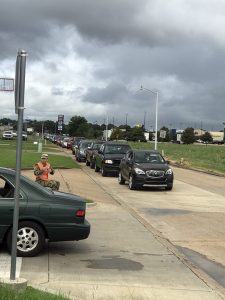
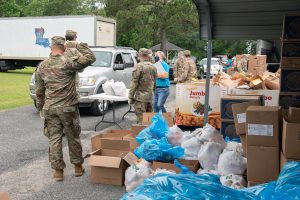
The food bank isn’t the only organization that distributes food in Cenla. All of its partner agencies–local pantries, shelters, meal services, and community programs–felt the high demand for food and needed to increase capacity to keep more fresh produce, dairy, and meats for their clients. In all, thanks to grants from Feeding America and The Rapides Foundation, the food bank was able to supply 74 coolers and freezers, as well as dry storage shelving, warehouse carts, packing supplies, face masks, gloves, and hand sanitizer to food distribution partner organizations across the 11 parishes in the food bank’s service area.
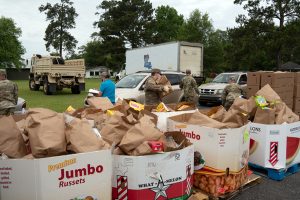
On average, the food bank and its partners served about 42,500 households per month in 2020–that’s 20,000 more families each month over the previous year. Not surprisingly, given the economic fallout of the pandemic, approximately 40% of those clients are new to the food bank. What is surprising is that many would have qualified for services pre-pandemic, and will continue to receive services long-term. The food bank’s increased capacity has expanded services to reach into more communities throughout Cenla; to places where hunger has been present for decades, as well as where COVID has introduced people to hunger who have never known it before.
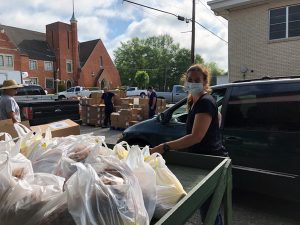
For the Food Bank of Central Louisiana, things are expected to get worse before they get better. Continued restrictions will mean fewer community food drives, long-term limitations for program partners, no large volunteer groups, and no return to events and traditional fundraising. No one knows how long donors can keep supporting non-profit organizations like food banks at 2020 levels. Experts predict that at some point this year, as vaccines are administered and COVID fears subside, donations will begin to dry up. We already know that federal and state disaster relief programs and grants will end in a few months, which will have a huge impact on the food bank. The challenge will be to continue to meet the projected long-term need across Cenla, perhaps for years to come.
So, how can the community be of the most help? There is a lot that people can do to help the food bank. The needs are simple–Food, Funds, and Friends.
- Food: As the federal USDA pandemic programs expire, the food bank will go through its food supply quickly. Food drives are great ways to keep the community involved and help the food bank at the same time.
- Funds: Digital fundraisers are mainstream these days. They are easy to set up and can reach a lot of people with a little effort. Most social media platforms have ready-to-use fundraising tools to help anyone help any organization. Every dollar provides five meals for a neighbor in need.
- Friends: With all their new and expanded services, the food bank needs volunteers. The warehouses are set up so that people can pack food boxes at a safe social distance. Individuals and small groups can be accommodated in the space. There are also opportunities to volunteer to help distribute food at all of the mobile pantries and many of the food bank’s partner agencies around the region. Contact Carole Stafford, the food bank’s Volunteer Coordinator, to schedule time by calling (318) 445-2773 or email [email protected].
The challenge before us for years to come is to strive with the urgency and motivation we all felt through 2020. Together we can alleviate hunger in Central Louisiana!

